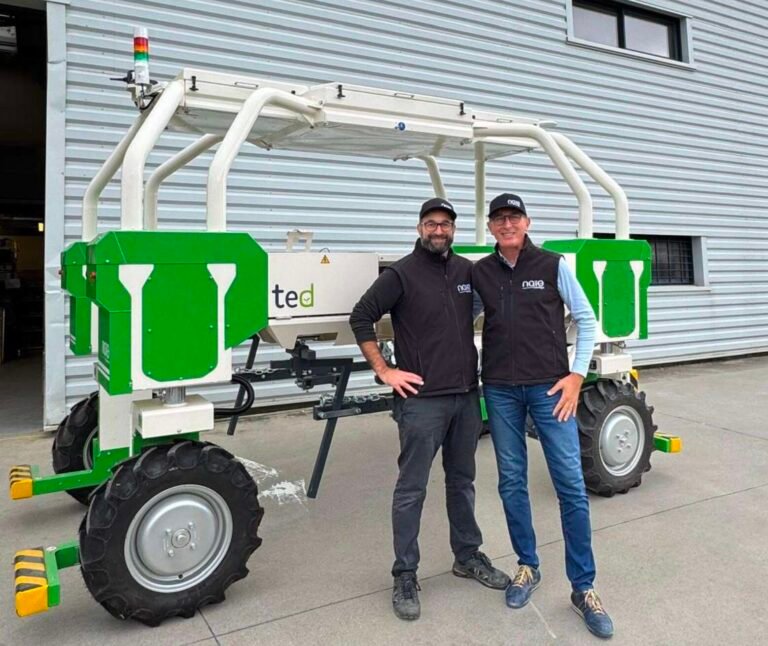Bruce Campbell is chief innovation strategist at Clim-Eat, an initiative working to direct public attention towards the crucial intersections between food and climate, and encourage collective action towards building a more sustainable and healthy future.
The views expressed in this article are the author’s own and do not necessarily represent those of AgFunderNews.
The future of the planet and its population depends on a transition to agriculture that is resilient to climate shocks and that reduces its environmental footprint—hence, the ongoing need for climate-smart agriculture.
And when farming employs as much as 86% of the labour force in developing countries, this transition must be just and equitable, leaving no one behind.
A key aspect of this is repurposing agricultural subsidies, particularly those for inorganic fertilizers, to support climate-smart practices that also improve yields, livelihoods and food security.
But the package of support needed to deliver a just rural transition cannot be delivered by the agriculture sector alone. Instead, agricultural subsidies should be reformed as part of a broader social welfare effort that addresses fundamental inequalities that hold back smallholder farmers.
Repurposing subsidies for good
Agricultural subsidies are an important lever for enabling and incentivizing specific practices, especially for smallholder farmers, who often have limited access to resources and finance.
But current input subsidy programs in developing countries, much of which are focused on inorganic fertilizers, are not always appropriate or effective in improving productivity, much less enabling the transition to climate-smart agriculture.
For example, 30% of Malawi’s agricultural budget was earmarked for subsidized inorganic fertilizer in 2023/24 but soil degradation continues. With more than 29 tons of topsoil lost per hectare annually, Malawi’s soil degradation rate is 10 times the global average. In addition, outcomes for yields, livelihoods and food security are disappointing.
Optimizing fertilizer use is a crucial aspect of the transition to climate-smart agriculture to enhance livelihoods, reduce unnecessary emissions and ensure farmers can adapt effectively to new conditions.
Malawi is now piloting a system in which support for inorganic fertilizers is conditional on other practices such as legume intercropping or agroforestry, applying soil conservation measures and managing soil organic matter. This is one of the innovations on show this week at the Global Climate-Smart Agriculture conference in Brasília to inspire new commitments at COP30 in support of the Action Agenda.
Social welfare for sustainability
While repurposing agricultural subsidies can help support the transition to climate-smart agriculture, it will not reduce poverty and food insecurity to ensure the transition is just.
Most farms across nine sub-Saharan countries are less than two hectares and generate as little as $78 per hectare per year. Such farms would need to turn over a minimum of $1,250 per hectare per year just to reach the poverty line.
For a just rural transition, agricultural ministries must work with those that deal with welfare and social development to incorporate cash transfers, food for work programs and other initiatives that uplift the rural community.
Such efforts can also work to the benefit of agriculture. For example, Ethiopia’s Productive Safety Nets Program (PSNP) provides cash or in-kind transfers for labour-intensive public works, such as the construction of terracing to reduce soil erosion. This builds climate resilience while also reducing agricultural emissions.
Ministries of trade, health and education can also play a role in ensuring that farmers have a market for more diverse produce. School feeding programs, for example, play the dual role of improving childhood nutrition and providing a reliable market for farmers adopting climate-smart crops.
Ministries involved in job creation and employment need to be engaged to build capacity and upskill households for jobs outside of farming in areas where climate change makes agriculture unviable.
But governments also need good data on which households to earmark for agricultural subsidies, and which need to be earmarked for safety net programs and support to move out of agriculture. This relies on investments into digital infrastructure and data-gathering systems.
The agriculture sector around the world, including in developing countries, simply must transition to climate-smart practices to continue to be viable.
But such a transition needs a whole-of-government effort to also factor in the needs of millions of people who depend on agriculture not only for their food security but also for the livelihoods.
A just rural transition must include both rewards and incentives to minimize losses along the way. The stakes are too high to leave farmers without a safety net.
The post Guest article: Making agricultural subsidies part of social welfare is a step towards a just rural transition appeared first on AgFunderNews.

